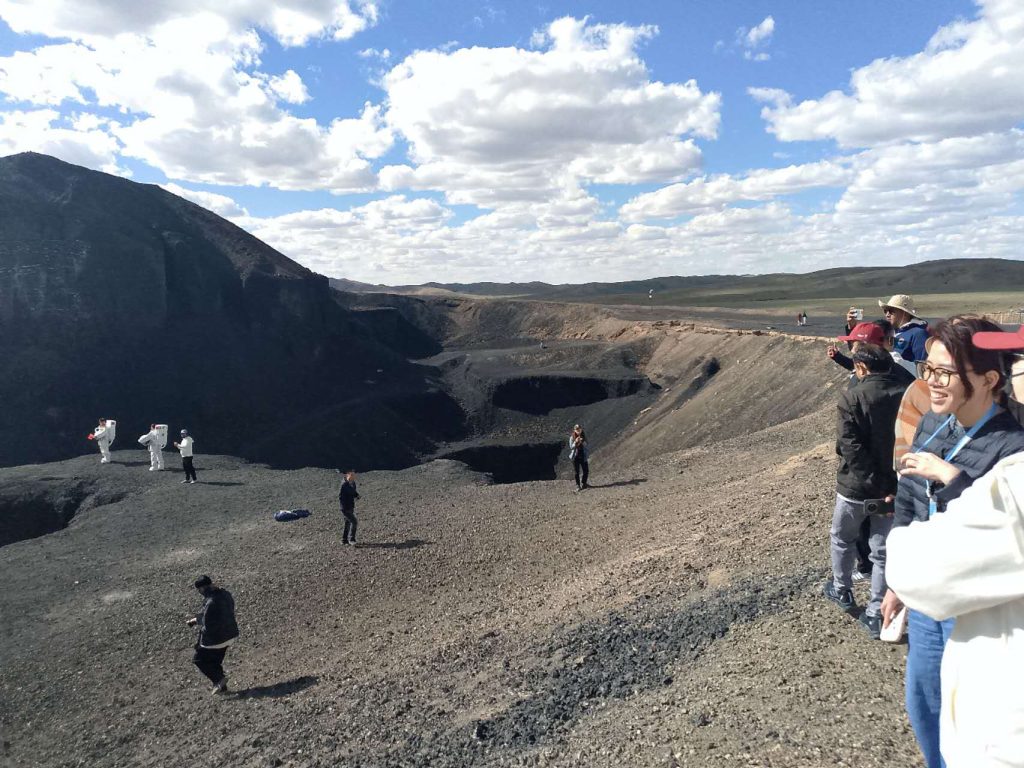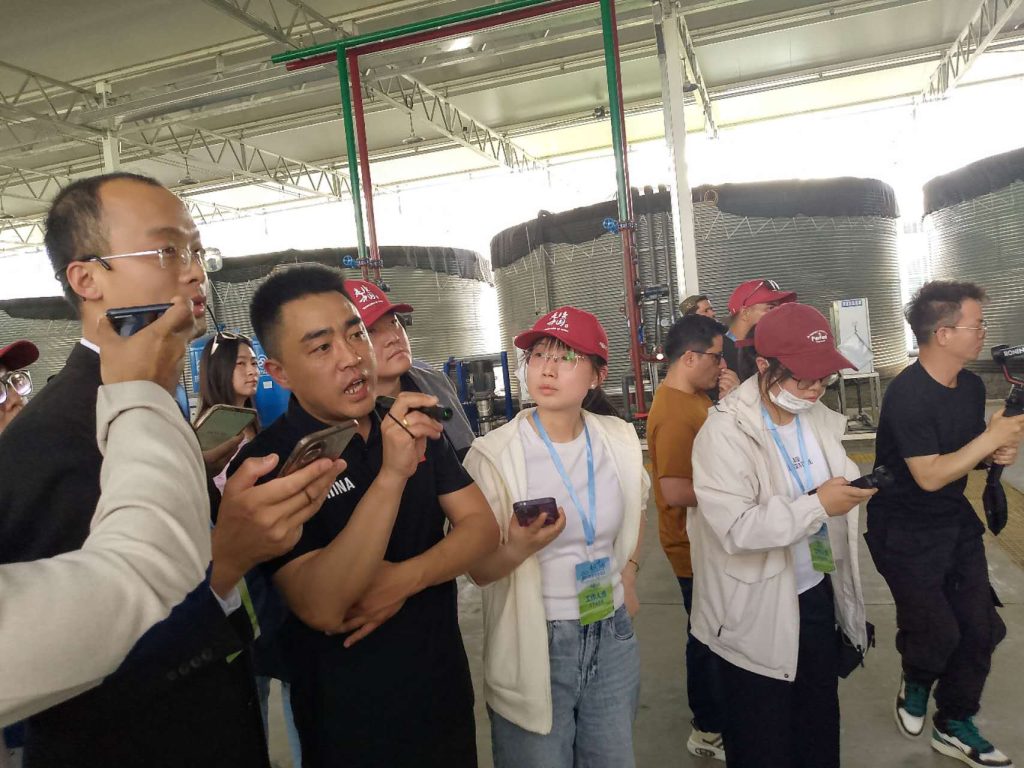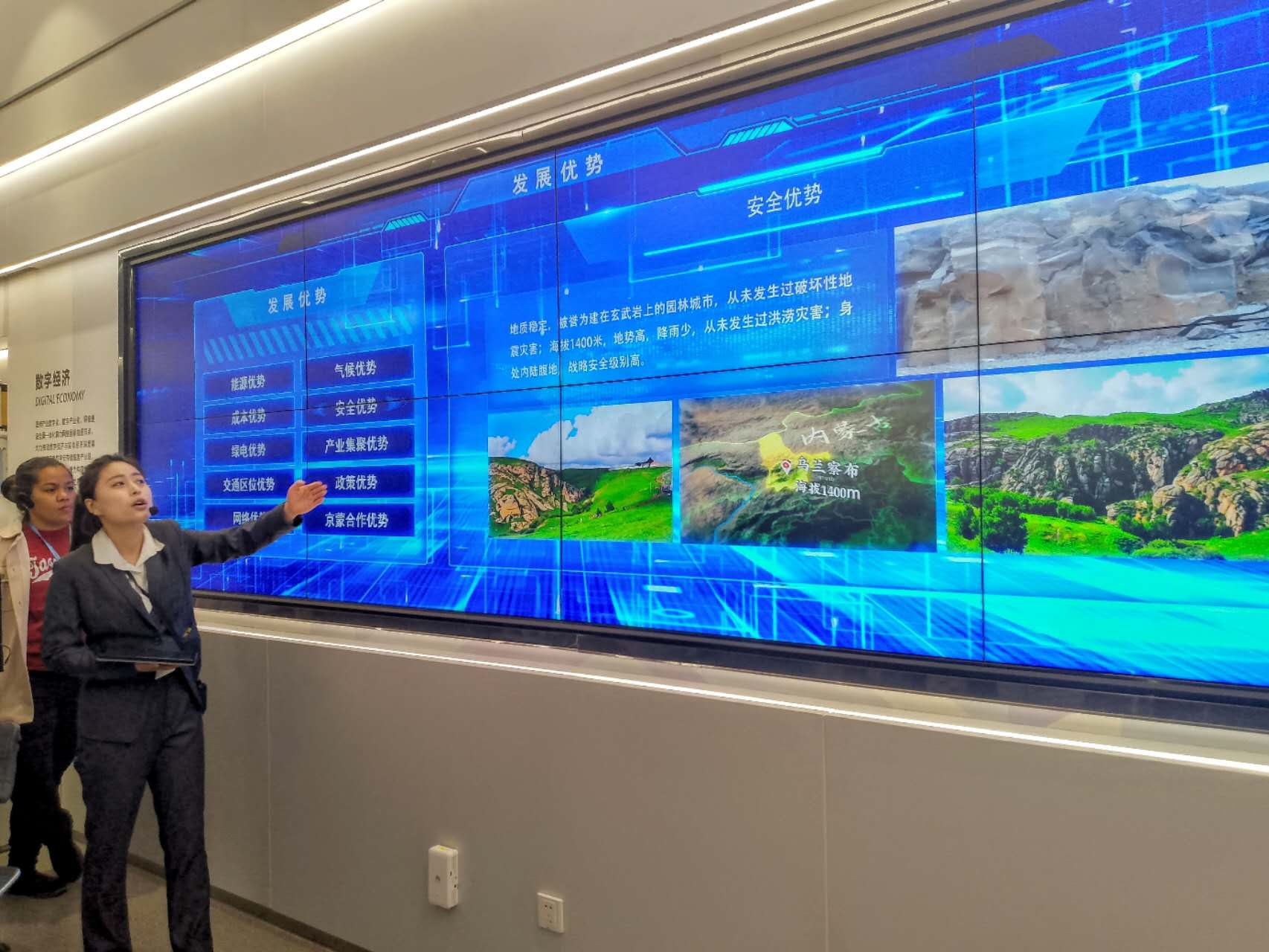WITH awarded titles such as National Garden City, National Hygienic City, National Food Safety Food Demonstration City, and reputation as Potato Capital of China, Summer Retreat Capital of China’s Grasslands, Oat Capital of China and Yogurt Capital of China’s Grasslands, Ulanqab City stands tall as a thriving industrial ecological hub.
Located in the central part of the Inner Mongolia Autonomous Region, Ulanqab City boasts a total area of 54,500 sq km and a permanent resident population of 1.5807 million by the end of 2024. The city administers 11 counties and districts.
In 2024, the city’s Gross Regional Product (GRP) reached 121.42 billion yuan, which is 5.4 per cent higher than the previous year. Its added value of industrial enterprises above the designated size grew by 10.8 per cent year-on-year, ranking third in the autonomous region. The fixed asset investment increased by 4.4 per cent. The total retail sales of consumer goods reached 25.86 billion yuan – up 3.3 per cent year-on-year. The city’s general public budget revenue saw a 3.3 per cent year-on-year rise, totaling 7.02 billion yuan for the period. The per capita disposable income of urban and rural residents in Ulanqab has reached 42,048 yuan and 18,206 yuan respectively, representing year-on-year growth rate of 6.4 per cent and 7.2 per cent.
I count myself and my media counterparts from around the world, who are here in China for a three-month study tour, as privileged to visit Ulanqab City and tour some of the industrial establishments contributing to the economic success of this city, the Inner Mongolia Autonomous Region and China.
Our visit to Ulanqab City, from Wednesday 14 May to Friday 16 May, was part of a four-and-half-day “Travelogue of China” International Media and Communication activity hosted by the China Public Diplomacy Association (CPDA) and “Huanqiu. com”. It also covered Hohhot City, the capital of Inner Mongolia, which we visited on Monday 12 and Tuesday 13 May.
On Wednesday 14 May, we visited the Chahar High-Tech Development Zone headquarters, Windey Energy Technology Group, Yunda Holdings Northern Headquarters and Smart Industrial Base, and the Ulanhad Volcano Cluster.
On Thursday 15 May, we visited Chayouqian Banner Cold-Tolerant Vegetable Academician Workstation, Shuda Food Company Limited and Plant Factory Complex Project (Strawberry Base).
On Friday 16 May, we visited Qisumu International Logistics Park before travelling back to Beijing.

Chahar High-Tech Development Zone:
This high-tech development zone is strategically- positioned in the in the confluence of China’s Beijing-Tianjin-Hebei and Hohhot-Baotou-Yulin-Yinchuan economic corridors.
It boasts distinguished titles, including Eco-Industrial Zone, Credit Worthy Zone and Industrial Information Demonstration Zone.
Spanning 79 square kilometers in master-planned area, the Chahar High-Tech Development Zone offers exceptional connectivity via Adjacent high-speed rail and airport infrastructure, serving as Inner Mongolia’s pivotal hub for East-west industrial linkages and North-south trade integration.
In keeping with the development philosophy of “ecological primacy and green growth” and the model of “industrial clustering and city integration”, Chahar High-Tech Development Zone has been strategically aligned with Yiwutang District, Bayan District and the Industry-City Integration Zone.
The Yiwutang District focuses on equipment manufacturing and information technology industries. Bayan District is strategically positioned to develop modern chemical industries and agro-livestock product processing and upstream and downstream industrial chains, while the “Industry-City Integration Zone” leverages academic institutions, research and development centers, and technology incubators to create a ‘production-education research’ ecosystem by driving innovation and facilitating high-tech commercialization.

Windey Energy Technology Group:
Relying on its technological practices in green energy, the company participates in the preparation of the Green Methanol Product Carbon Footprint Evaluation standard process. This standard creativity underlies a green methanol carbon footprint evaluation system that has gained a foothold in China and keeps in line with international standards.
The company has seamlessly integrated the realities of Chinese industries with the requirements of international standards such as that of the European Union (EU).
From the perspective of the life-cycle that ranges from raw material acquisition, production process to terminal application, this international standard procedure has guided the company’s establishment of a scientific and systematic carbon footprint evaluation system for the development of the entire industrial chain of green methanol in terms of certification and trading.
This standard procedure, which officially came into force in early March this year, paves the way for the company’s massive application of green methanol in sectors as shipping, chemical engineering, promoting the green and low carbon transformation of energy.
Driven by “Technology + Standard+ Application”, the company is committed to pushing ahead with the establishment of the carbon footprint emission factor library and database of marine green fuels with the view of injecting new impetus into the popularization and application of green fuels and to facilitating the global energy transformation.

Yunda Holdings Northern Headquarters and Smart Industrial Base:
This base features China’s first full-scale 13 MW onshore wind turbine testing platform, and therefore plays an important role in driving corporate innovation and technological advancement.
It boasts an annual production capacity of 5 gigawatts in wind power flagship products, ranging from 4MW to 10MW onshore wind turbines.
As a flagship modern energy equipment manufacturing project introduced under Ulanqab’s “Energy + Industry” development model, the enterprise serves as an “anchor firm” in the industrial chain by driving localized development and upstream-downstream synergies that are dedicated to elevating both the scale and quality of renewable energy equipment manufacturing across Inner Mongolia and nearby Chinese regions.

Ulanhad Volcano, Chayouhou Banner:
This volcano cluster, located between Ulanhad Sumu of Chayouhou Banner and Bayan Qagan Town, covers an area of approximately 280 sq km.
The volcano cluster are the remains of 20 volcanoes believed to have erupted 26,000 years ago.
It is the only Holocene-era volcanic cluster with recorded eruptions along the southern margin of the Inner Mongolia plateau, and has been featured in the Chinese National Geographic magazine.
The unique geological landscape, comprising grassland volcanic formations and lava land forms, has earned itself the reputation of a “Volcanic Museum.”
Capitalizing on the unique characteristics of the volcano cluster, Chayouhou introduced volcano-themed homestays to cater for growing tourist demand for immersive experiential stay.
By catering for modern tourists’ growing demand for immersive experiential stay, this initiative has simultaneously boosted sales of local agricultural and livestock products and stimulated growth across upstream and downstream industries.
These distinctive volcanic-themed homestays have boosted rural revitalization by fostering cultural tourism integration, and consistently contributing to high-quality economic development.

Chayouqian Banner Cold-Tolerant Vegetable Academician Workstation:
Established in 2012, this is China’s first dedicated workstation for cold-tolerant vegetable research.
Ulanqab City’s unique geographical location and climate – situated at 41 degrees North latitude and 1,400 meters above sea-level of the Yin mountains with an annual average temperature of 43 degrees Celsius – provides natural advantage for the establishment of this research station.
But as early as 2000, well before the establishment of this research station, Ulanqab City, through joint efforts of local markets, merchants, farmers and agricultural technicians commenced the trial cultivation of cold-tolerant vegetables such as carrots and onions. At that time, farmers’ net income per monitor unit already exceeded 1000 yuan and this stimulated their cultivation enthusiasm.
Over the past decade, the Cold-tolerant Vegetable Academician Workstation facilitated the extension of Ulanqab’s cold-tolerant vegetable cultivation to 500,000 mu (approximately 33,333 hectares), generating an annual output value of 2.4 billion yuan. This initiative created employment opportunities for over 300,000 farmers from various ethnic groups across Inner Mongolia.

Shudu Kaida Food Co. Ltd:
Shudu Kaida Food Co. Ltd was established in 2016 in Chayouqian Banner with a registered capital of 100 million yuan, and currently employs 238 staff.
The company is a subsidiary of Beijing Kaida Hengye Agricultural Technology Development Co. Ltd.
As a national high-tech enterprise and a national key leading enterprise in agricultural industrialization, it integrates production, education, research, cultivation, processing and sales into a comprehensive operation system.
The company specializes in developing and producing French fries, crispy fruit and vegetable chips, bean products and other snack lines.
As a modern food enterprise focused on potato, cold-tolerant vegetables and legume-based food research and development and production and sales, its products are distributed across 32 Chinese provinces and municipalities, including Beijing, and also exported to over 30 countries.

Plant Factory Complex Project (Strawberry-Base):
This Chayouqian Banner Plant Factory Complex Project spans approximately 1.57 hectares and consists of 18 cultivation modules with 17 dedicated to strawberry cultivation and one for leafy greens.
Each strawberry module yields 8,640 kg annually, which is 15 times more than the output of open-field cultivation and 12 times higher than that of greenhouse production per equivalent area.
Compared with traditional methods, the harvesting cycle has been expanded to twice the original length, enabling a study supply throughout the year.
Leveraging digitalized smart production technologies, the plant factory achieves highly efficient and precise crop cultivation. Every aspect of the strawberries, including flavor, color, size and nutritional content, is meticulously controlled, positioning the produce for premium markets at prices ranging from 400 to 600 RMB per kg.
When operating at full capacity, if is projected to produce 146 tons of strawberries annually, generating annual sales of 30 million RMB. It enhances the village collective economy by 3.6 million RMB, creates 60 local job opportunities and increases the average annual income of workers by over 30,000 RMB.

Qisumu International Logistics Park:
This park covers a planned area of 14.01 sq km. It is bounded by Quanyulin Avenue to the east, Baoshui West Street to the south, Xiqiao Road to the west and the Enguang Expressway to the north, and therefore serves as an important corridor for China’s access to Mongolia, Russia and Eastern European countries.
It offers convenient connectivity to the domestic markets of the Beijing-Tianjin-Hebei region while also acting as a gateway for international trade.
The park enjoys unique advantages in coordinated development and functional synergy due to its strategic location.
By DELI-SHARON OSO
In Beijing, China






